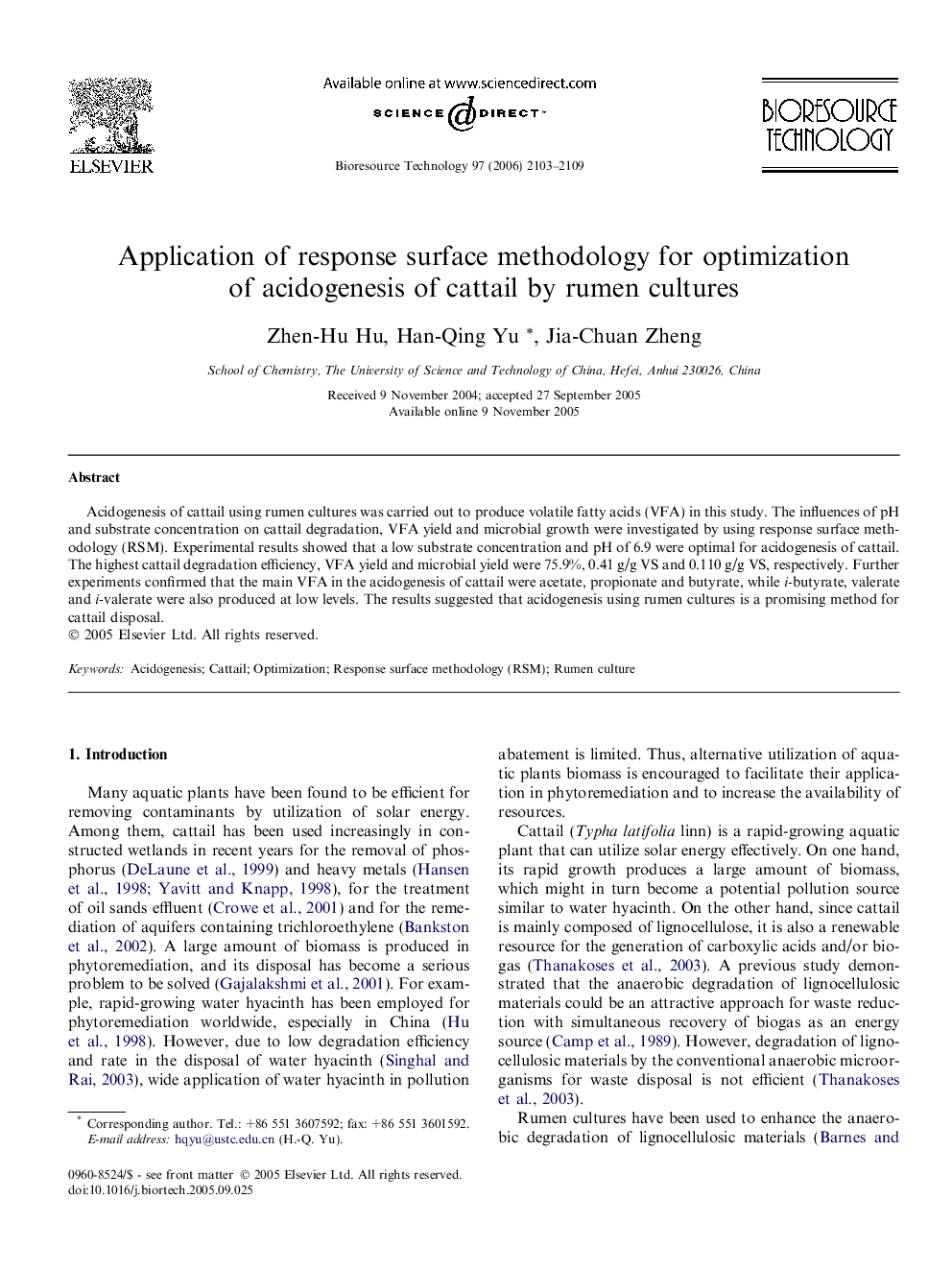| Article ID | Journal | Published Year | Pages | File Type |
|---|---|---|---|---|
| 685519 | Bioresource Technology | 2006 | 7 Pages |
Acidogenesis of cattail using rumen cultures was carried out to produce volatile fatty acids (VFA) in this study. The influences of pH and substrate concentration on cattail degradation, VFA yield and microbial growth were investigated by using response surface methodology (RSM). Experimental results showed that a low substrate concentration and pH of 6.9 were optimal for acidogenesis of cattail. The highest cattail degradation efficiency, VFA yield and microbial yield were 75.9%, 0.41 g/g VS and 0.110 g/g VS, respectively. Further experiments confirmed that the main VFA in the acidogenesis of cattail were acetate, propionate and butyrate, while i-butyrate, valerate and i-valerate were also produced at low levels. The results suggested that acidogenesis using rumen cultures is a promising method for cattail disposal.
